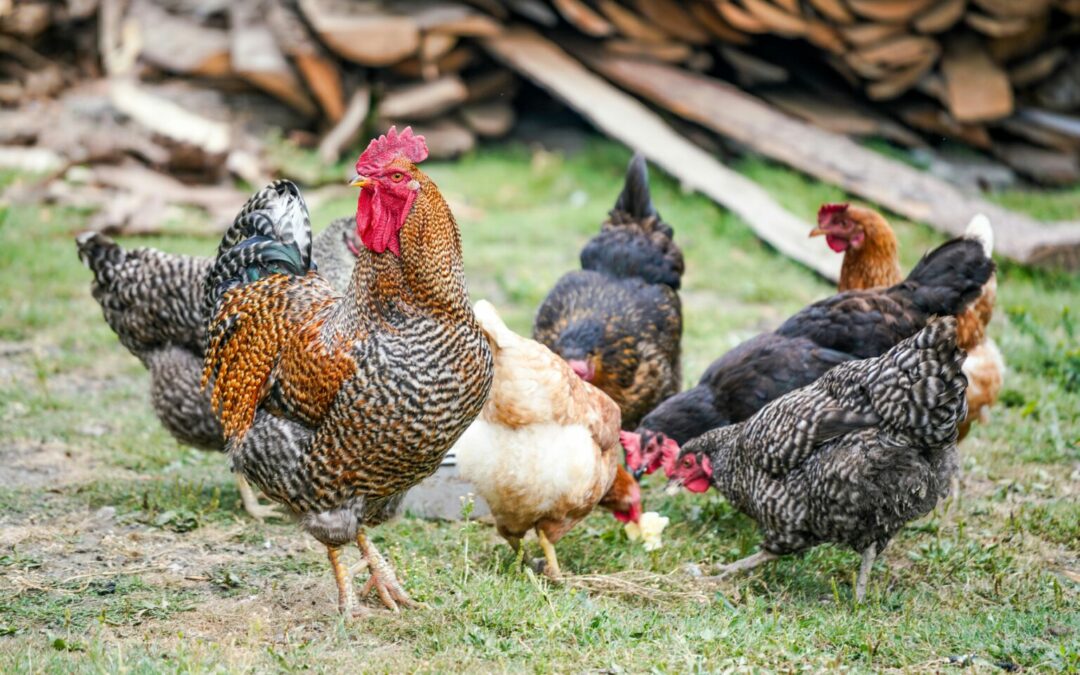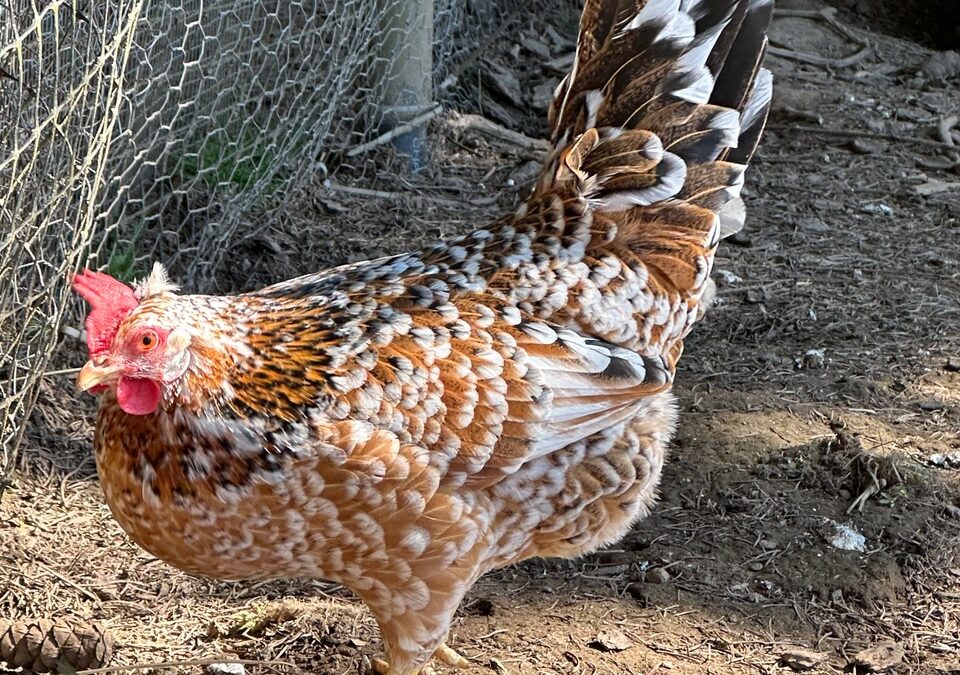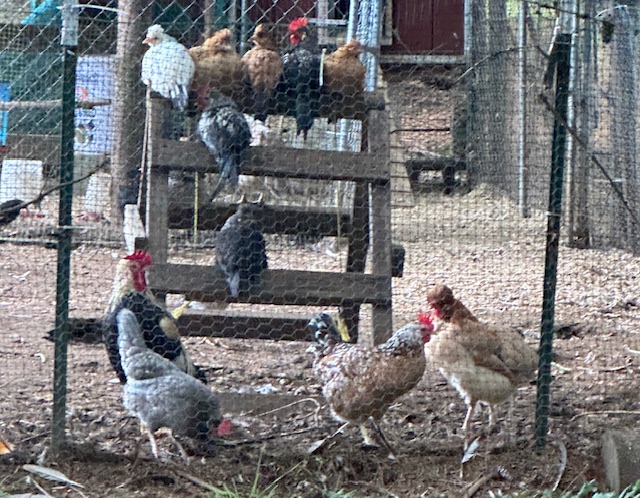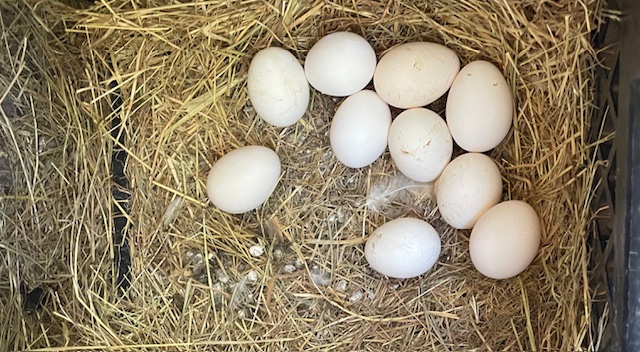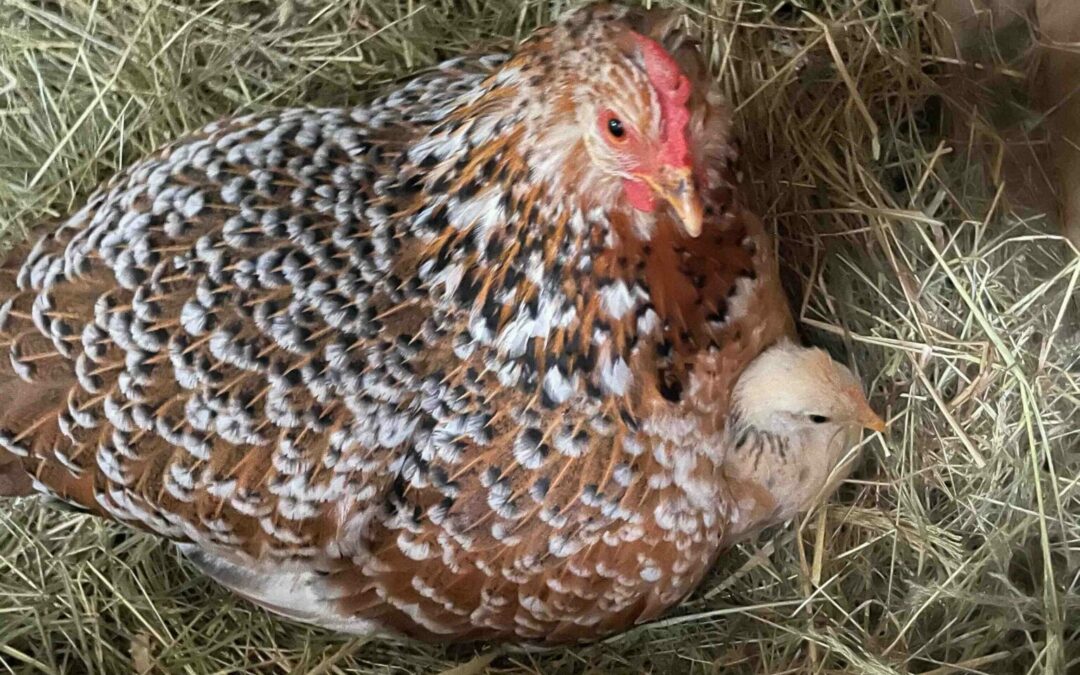
The Stages of Development
Have you heard the phrase, “Well, you’re no spring chicken?” As you can imagine, the subtext is that chickens are typically born in spring. For me, that means at least one of my chickens is going to be broody. In case you are a chicken novice, a “broody” hen wants to gather a clutch of eggs, incubate them and ultimately hatch them. The first step in this “broodiness” is gathering eggs to sit on until she has an appropriate number in her clutch.
In my experience, that “appropriate” number in a clutch can exceed 12 eggs. So we intervene. Considering the size of my coop and the number of potential broody hens, we have settled on six eggs being an ideal clutch size. Once a hen goes broody, we mark the designated eggs and then, on a daily basis, lift the broody hen up and remove all unmarked eggs from her clutch. Depending on the hen, her acceptance of this daily handling can vary from a quiet “growl” to all-out pecking at the handler. Other than occasionally leaving the coop to eat and poop, she will sit on her eggs for three weeks.
A few days prior to the expected egg-hatching date, we relocate her and her eggs to a separate coop. Every morning, I check on her. Her typical response is to puff up her feathers and lowly growl at me. But inevitably that changes once her peeps arrive. At some point she’ll puff up even more, and her growling will become much more aggressive. That is the clue to listen for the first of “the peeps.” The hen hovers over her brood until all the peeps have hatched.
Once her brood is complete, she will start to parade them outside the coop. She teaches them how to eat, pulling food out of the feeder and putting it on the ground for the peeps. She will show them how to peck at the grass looking for bugs. During that time, her protective nature moves into high gear. If she feels threatened by me, she will charge at me with all her feathers fanned out, keeping herself between me and her peeps. Over the next week as her peeps become more self-sufficient, her aggression will mellow out a bit. She’ll still make her motherly clucking noises to alert her peeps of potential threat, but if I need to enter the coop to refresh the food or water, she won’t charge me.
As I reflect on a hen’s behavior through these stages, it is apparent that her behavior changes with the needs of her clutch. For a whole host of reasons, I’m not going to compare the stages of raising peeps to the stages of raising humans. However, I am going to compare them to the care and development of employees.
Every organization needs people to achieve its vision. There is no way around this. Yes, the type of work we need done may change over time, but we need people. As humans, we are unique beings who are constantly growing and (we hope) evolving. As such, every team member is at a different stage in their professional and personal development. Some employees come into the organization with a lot of knowledge but not a lot of experience in the position they were hired to fill. Some employees have amazing talent but are missing some of the soft skills needed to thrive in their position. And some employees want to grow their skills in order to advance their careers. Regardless of where each of your team members are, they all need a manager who cares for them and wants to help them develop.
Have you ever stopped to consider what stage your employees are in and what they need from you to be successful? When they come to you with an issue, are you solving the issue for them or taking the time to help them solve it for themselves?
I don’t know about you, but when someone comes to me with an issue, I struggle with the temptation to jump in and solve it for them. As I like to say, I’m really good at solving other people’s problems. Mine, not so much.
We love to solve other people’s problems for various reasons. One reason is that it takes time to coach someone through finding the solution for themselves. Another reason, if we are honest with ourselves, is we like to be the hero. But when we solve the problem for another person, we prevent them from finding their own solution and ultimately owning that solution. This robs them of the opportunity to do the hard work, come up with the right solution and grow in confidence once they solve the issue.
Depending on the stage the employee is in, they may need more or less guidance to find the right solution. But, regardless of the stage they are in, this guidance needs to come in the form of questions, not directives. Instead of giving answers, perhaps ask, “How could you solve this issue?” Or “What are some solutions to this problem?” If they don’t know, ask them, “What are some options?” Or, “If someone came to you with this issue, what would you suggest?”
Then keep asking them, “and what else?” until you feel they have enough options to consider. Then ask, “Which of these solutions would yield the best result?” and maybe, “What makes you say that?” The magic is in letting them work through the issue while you prompt them with questions along the way.
A few years ago, I was on a call with one of my clients. She was frustrated with the business and felt she needed a new business model. I began asking her questions about what made her feel that way, what issues she saw, what changes she could make. Over the course of an hour, by addressing these questions, she was able to identify changes she needed to make. At the end of the conversation, she thanked me for helping her solve her problem. I told her all I did was ask questions and she identified the changes all on her own. She was actually surprised when she realized I hadn’t made a single suggestion. The conversation made her feel more confident in her decision-making skills.
After the call, I thought more about my part of the conversation. I realized asking questions rather than telling her what to do was hard work. I felt the internal struggle between telling her how I thought she should run her business and slowing down to listen to her and ask thoughtful questions to help her make the right decisions for her business. The truth is – it isn’t my business, and I couldn’t possibly know what the right business model should be for her. For me to think otherwise is just arrogance on my part.
How about you? Are you playing the hero in your employee’s story? Or are you allowing them to grow in confidence by asking insightful questions? If you need some coaching on how to ask insightful questions, please reach out to me. I won’t solve the issue for you, but I will ask thought-provoking questions and share some resources that have helped me.

